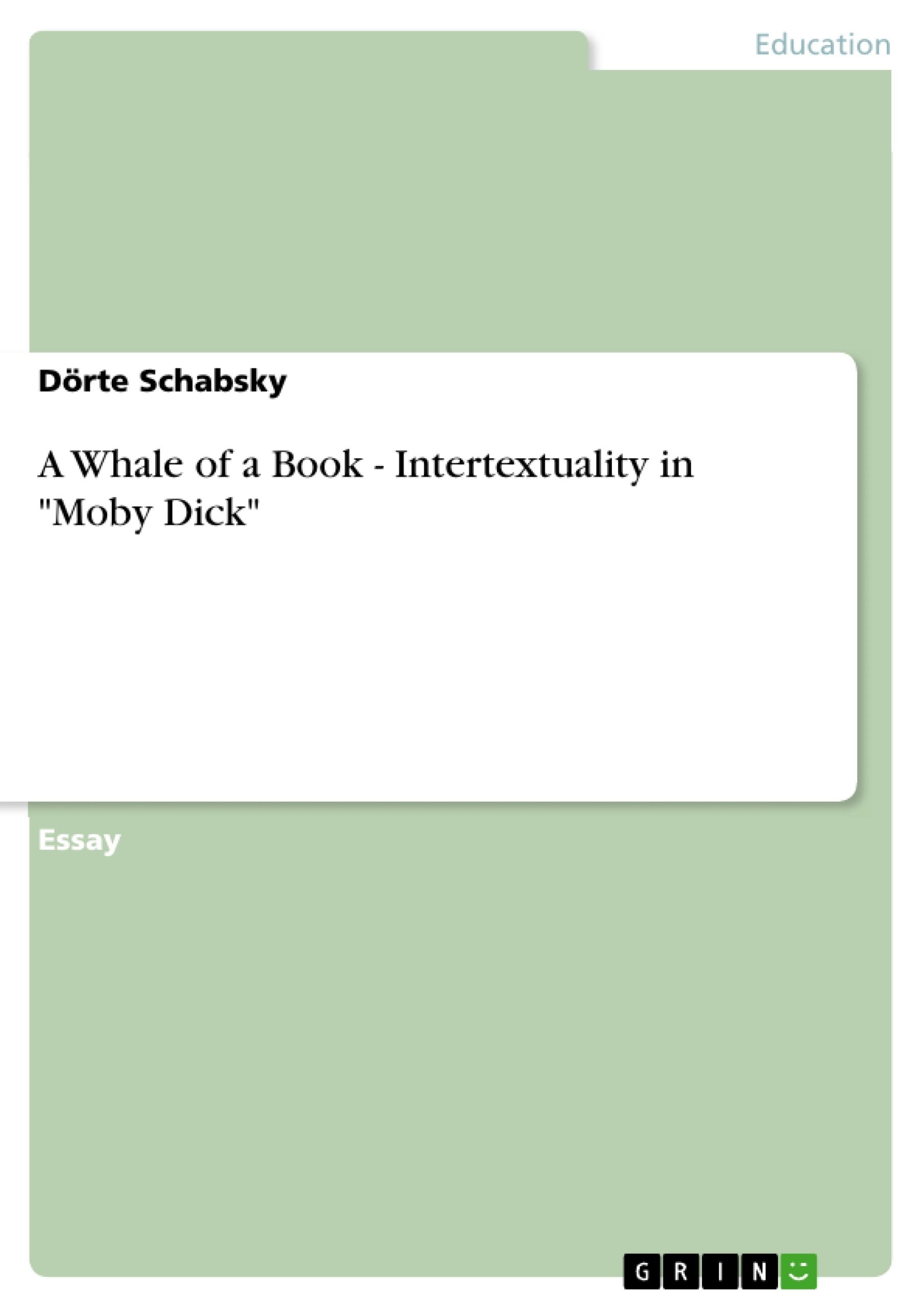Intertextuality elicits a sheer unlimited range of possible readings of a text. This is due to the fact that intertextual references enrich and deepen the text. It depends on the reader and his prior knowledge, however, in how far he is able to notice and activate the intertextual references in order to derive further meaning from it.
Table of Contents
- Intertextuality
- Moby Dick and Intertextuality
- Adaptations and Intertextuality
- Conclusion
Objectives and Key Themes
This work aims to explore the concept of intertextuality and its impact on the interpretation of literary texts, using Herman Melville's Moby Dick as a primary example. It investigates how prior knowledge and cultural background influence a reader's understanding of intertextual references within a text and how these references contribute to multiple readings and adaptations.
- The definition and scope of intertextuality
- The influence of intertextuality on reader interpretation
- The role of prior knowledge in understanding intertextual references
- The creation of new intertexts through adaptations
- The impact of different types of intertextual references (obvious vs. subtle)
Chapter Summaries
Intertextuality: This chapter introduces the concept of intertextuality, defining it as the interdependence of literary texts and highlighting how every text is influenced by those that precede it. It draws upon Julia Kristeva's work, emphasizing that texts are essentially mosaics of quotations and allusions, challenging the notion of authorial originality. The chapter establishes the central argument that understanding a text requires acknowledging its intertextual connections and recognizing the reader's role in activating these references to derive meaning.
Moby Dick and Intertextuality: This section delves into the specific examples of intertextuality within Melville's Moby Dick. It analyzes both obvious and subtle intertextual references, particularly those drawn from the Bible. The chapter examines how these references, whether explicitly explained or requiring prior knowledge, shape the reader's perception of characters and events. The discussion highlights how different editions of the novel, with or without explanatory footnotes, can significantly alter a reader's understanding of the intertextual allusions.
Adaptations and Intertextuality: This chapter explores how the concept of intertextuality extends to adaptations of literary works. Using the example of various adaptations of Moby Dick (films, comics, etc.), it demonstrates how each adaptation represents a unique "reading" of the source text, influenced by the adapter's own background and interpretation. The chapter emphasizes that these adaptations, in turn, become intertexts themselves, contributing to an ever-expanding network of interconnected interpretations. The differences in how closely adaptations adhere to the "original" are analyzed, showing how even faithful adaptations reveal the perspective of the adapter.
Keywords
Intertextuality, reader response, literary interpretation, adaptation, Herman Melville, Moby Dick, biblical allusions, cultural background, prior knowledge, multiple readings, intertextual networks.
Frequently Asked Questions: A Comprehensive Language Preview
What is the main topic of this academic preview?
This preview focuses on the concept of intertextuality and its impact on the interpretation of literary texts, primarily using Herman Melville's Moby Dick as a case study. It explores how prior knowledge and cultural context influence a reader's understanding of intertextual references and how these references contribute to multiple interpretations and adaptations.
What are the key themes explored in the preview?
The key themes include the definition and scope of intertextuality; the influence of intertextuality on reader interpretation; the role of prior knowledge in understanding intertextual references; the creation of new intertexts through adaptations; and the impact of different types of intertextual references (obvious vs. subtle).
What does the preview cover in terms of content?
The preview provides a comprehensive overview, including a table of contents, objectives and key themes, chapter summaries, and keywords. It delves into the concept of intertextuality, examining its presence within Moby Dick, specifically analyzing biblical allusions and their effect on interpretation. Furthermore, it explores how intertextuality manifests in adaptations of Moby Dick, highlighting how these adaptations create new intertexts and contribute to a wider network of interpretations.
How is Moby Dick used in this preview?
Moby Dick serves as the primary example to illustrate the concepts of intertextuality. The preview analyzes both obvious and subtle intertextual references within the novel, particularly those drawn from the Bible, and shows how these references shape reader perception. Different editions of the novel, with or without explanatory footnotes, are also discussed to highlight how this can affect understanding of the intertextual allusions.
What role do adaptations play in the discussion of intertextuality?
The preview explores how intertextuality extends to adaptations of literary works. Using various adaptations of Moby Dick (films, comics, etc.), it demonstrates how each adaptation represents a unique "reading" of the source text, influenced by the adapter's own background and interpretation. These adaptations are shown to become intertexts themselves, contributing to a continuously expanding network of interpretations.
What are the key takeaways from this preview?
The key takeaways emphasize the interconnectedness of literary texts and the crucial role of the reader in activating intertextual references to derive meaning. The preview highlights that understanding a text requires acknowledging its intertextual connections and recognizing the reader's active role in interpretation. It also stresses the dynamic and ever-evolving nature of intertextual networks through adaptation and reinterpretation.
What are the keywords associated with this preview?
Key words include: Intertextuality, reader response, literary interpretation, adaptation, Herman Melville, Moby Dick, biblical allusions, cultural background, prior knowledge, multiple readings, intertextual networks.
- Quote paper
- Dörte Schabsky (Author), 2008, A Whale of a Book - Intertextuality in "Moby Dick", Munich, GRIN Verlag, https://www.grin.com/document/154161




